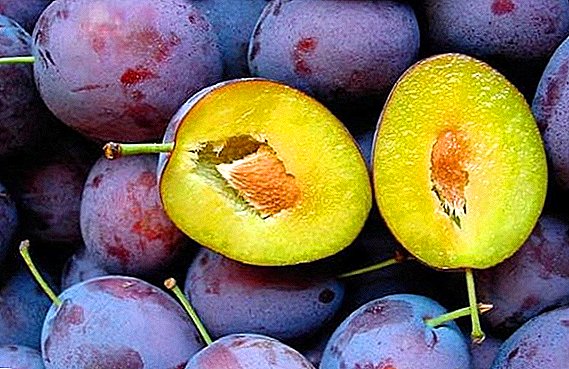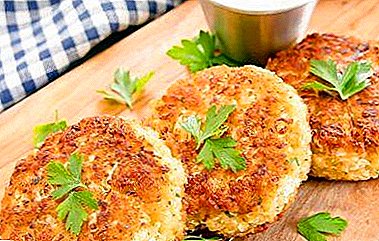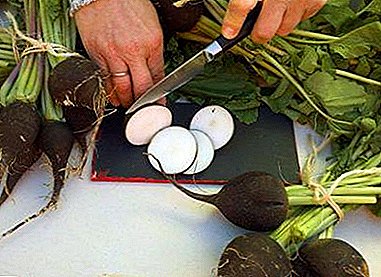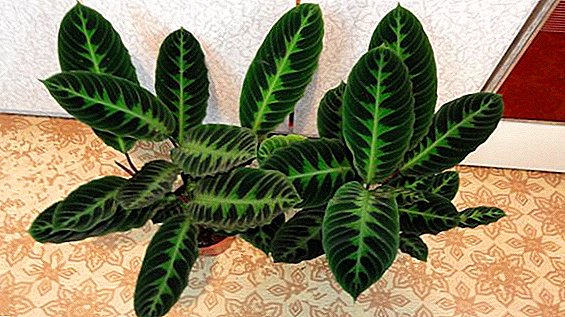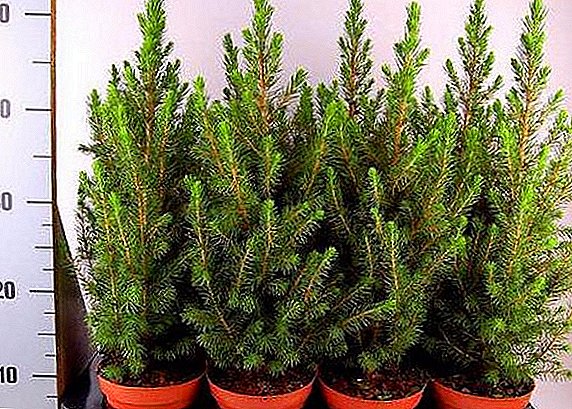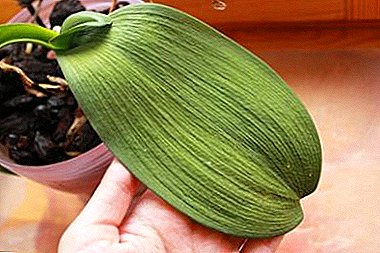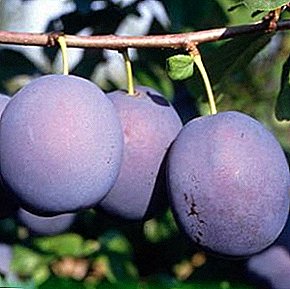 For a good harvest of plums, you need to choose the right variety. There are many varieties of interesting and popular varieties.
For a good harvest of plums, you need to choose the right variety. There are many varieties of interesting and popular varieties.
One of them is the Stanley Plum ("Stanley") - a detailed description of this variety, as well as the basics of growing You will find in this material.
History of breeding plum varieties "Stanley"
Sort "Stanley" is from the USA. At the beginning of the 20th century, Professor Richard Wellington crossed the French plum Pryuno Dagen and the American Grand Duke. In 1926, as a result of breeding, the variety "Stanley" appeared. The "Stanley" variety received an excellent taste from the French plum, and the resistance to freezing of flower buds from the American variety. In Russia, the Stanley variety was brought to the State Register in 1983. This variety of plum is popular all over the world. It is "Stanley" most often used for the production of prunes.
Did you know? Plum is not a long-lived tree. Its life span is 15 - 60 years.
Characteristic variety
What is the "Stanley" plum:
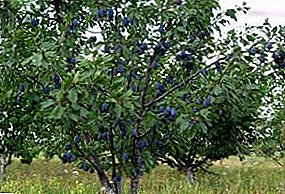
- the tree can reach a height of up to three meters. Crohn sparse, has a rounded shape. Trunk straight, dark gray;
- The shoots are red-purple in color, without downiness, have rare spines;
- leaves are medium, rounded, with a pointed tip. They are bright green in color, slightly concave and have a loose texture;
- blooms "Stanley" around mid-April;
- white flowers, diameter 3 cm. Petals slightly closed, have a wavy edge;
- the first fruits appear from the fourth year of life;
- the fruit is large, dark purple with a wax coating. The shape of the fetus is obovate, has a pronounced abdominal suture;
- the skin of the fruit is thin, poorly separated from the pulp;
- the pulp is yellow-green, fragrant and sweet;
- the stone of the pointed form, has a lumpy surface, well separates from pulp;
- Stanley loves fertile soils. Needs frequent feedings;
- considered to be winter-hardy, can tolerate frosts down to -34 ° C;
- drought resistance is low. In the absence of irrigation can lose fruit;
- yield of plum "Stanley" high. Gives fruits consistently. About 60 kg of fruit can be harvested from one tree.
Advantages and disadvantages of the variety
Considering all the characteristics of the Stanley plum variety, one can draw conclusions about its advantages and disadvantages.
Benefits: 
- tasty, sweet, high-quality fruits;
- universality of the destination of the fruit;
- high yield;
- good winter hardiness;
- good fruit transportability.
- affected by pests and fungal diseases;
- low drought tolerance;
- demanding of fertile soil;
- late maturity
Planting rules for stenley plum stenley
Before planting the Stanley plum variety, it is necessary to familiarize yourself with some rules for growing and further tree care.
Dates and choice of place for landing
Plum varieties "Stanley" is better to plant in the spring, before the sap flow. When planting in the fall variety takes root worse. Place for planting plum "Stanley" should be sunny and well protected from the wind. This variety of plum loves moisture, but will not tolerate stagnant water. Therefore, planting a tree in a valley is not recommended. Plum is very demanding on soil fertility. For planting tree suitable loam, slightly alkaline or neutral sandstone. If the soil is acidic, it is necessary to conduct liming. The area for planting plum "Stanley" must be at least 9 square meters.
Important! In the area where groundwater is close, it is recommended to lay a layer of bricks on the bottom of the pit for planting. It will help the roots of the seedling to grow to the sides and protect them from getting wet and freezing.
Site preparation and seedlings for planting
 For planting trees and further care for plums need to properly prepare the site. So that the soil has time to settle, the preparation of the landing hole begins in the autumn, before the first frost.
For planting trees and further care for plums need to properly prepare the site. So that the soil has time to settle, the preparation of the landing hole begins in the autumn, before the first frost.
Preparation of the pit depends on how fertile the soil is. If the soil for planting the Stanley plum is fertile, then the pit should be 80 cm in diameter and 60 cm deep. The top layer of soil should be removed and mixed with humus, observing a 1: 1 proportion. Now it should be poured into the planting hole with a mound bottom.
If the soil for planting is not fertile enough, the depth of the landing pit and its diameter should be 100 cm. First you need to remove the sod, chop it and mix it with two manure buckets and a liter jar of ash. This mixture is placed on the bottom of the pit. Then they take fertile soil from another place and fill it with a mound to half the depth.
Before planting the stench of plum "Stanley" you need to have a good look at its roots. Damaged and dry removed. Krona seedlings cut to one third, thereby stimulating its development.
The process of planting young seedlings
Planting young saplings of plum varieties "Stanley" special technology does not require. Landing is carried out by the general rules:
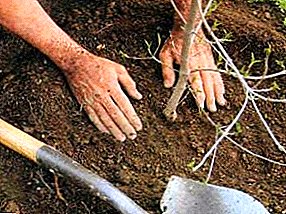
- At the bottom of the landing pit need to drive a supporting stake. The height should be such that the top of the support is slightly lower than the first lateral shoots of the young tree.
- Pit well shed water.
- A young seedling is placed next to a support stake and tied up.
- Roots distribute over the mound and fall asleep with the ground, well trampling.
- From a trunk recede 50 cm and around a chopper make a groove. Three buckets of water are poured into it.
- Mulch pristvolny circle peat or compost.
Important! It is necessary to follow the location of the root collar. It should be three fingers above the ground.
Terms of seasonal care for plums "Stanley"
Care for plum varieties "Stanley" need all year round. In the summer of plum trees must be watered and fed. Caring for plums in the fall includes warming trunks, sanitary pruning. In winter, you need to control the state of "insulation" on the trunks and shake off the snow from the branches. Spring care for plum consists of whitewashing the trunk, feeding and treating with means of pests.
Did you know? Dried or fresh plum leaves have a healing effect. They are also included in the tea collections.
Prevention and protection against pests and diseases
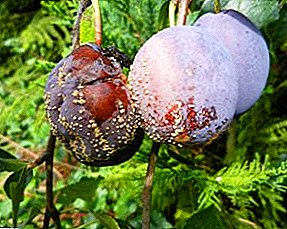 One of the diseases of the plum "Stanley" - moniliosis (gray rot). It is a fungus and looks like a brown spot. It grows very quickly and is covered with "fluff". In the spring in order to prevent, before the start of leaf blooming, trees should be treated with a fungicide. If the plum is sick, you need to cut off the infected branches and burn them.
One of the diseases of the plum "Stanley" - moniliosis (gray rot). It is a fungus and looks like a brown spot. It grows very quickly and is covered with "fluff". In the spring in order to prevent, before the start of leaf blooming, trees should be treated with a fungicide. If the plum is sick, you need to cut off the infected branches and burn them.
A dangerous pest for plums is aphid. These small insects damage shoots and leaves. To prevent a strong affection of the tree with aphids, you can plant marigolds around the plum tree. They attract ladybirds, who are enemies of aphids. If the damage is severe, you need to use insecticides.
Watering mode
Plum loves moisture, but will not tolerate stagnant water. Watering need regular - once a week in the morning or in the evening, using one bucket of water for each tree. If the summer is dry, water more often. During the period when fruits are formed and ripen, watering is increased 5 times. The most important thing is that the soil should not dry out. To plum is worse than extreme cold.
Feeding scheme
In the second year of life, the plum tree needs to start feeding: 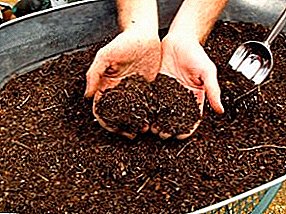
- Every spring, during digging, you need to make compost or humus (10 kg), add superphosphate (100 g) and potassium sulphate (100 g), urea (30 g) and wood ash (400 g) to it.
- Every three years the same fertilizer is used in the fall.
- In the fourth - the fifth year of life, when the tree begins to bear fruit, the proportions of fertilizers increase by half, except phosphorus and nitrogen.
- Regular mulching using compost or peat helps to retain moisture and protects against root growth.
- Before flowering carry out the next stage of feeding. Urea and potassium sulfate are introduced.
- During the pouring of the fruit fertilized with urea and nitrophoska.
- After harvesting make a mixture of superphosphate and potassium salt (30 - 40 g).
Competent pruning and crown formation
Pruning pruning "wall" spend the spring. Old plum trees are pruned to prolong fruiting. Cut the dried, diseased branches and those that grow inside the crown. The first anti-aging pruning is carried out three to four years after planting a tree. This procedure is repeated every four years.
Young saplings in the first year of life are pruned, leaving a trunk of 60 cm in length. In the summer they observe the development of the tree. If some branches grow incorrectly, in the fall they prune and remove them. In the second year of life, seedlings are pruned 40 cm along the main trunk. Be sure to remove the upper kidney under the cut. All side branches, except the lower ones, are shortened by a third. The lower shoots are cut, leaving a length of about 7 cm. In the third year of plum cultivation, the lower branches are removed completely, and the skeletal leaves are left 6 to 8 pieces, choosing the strongest and most conveniently located ones. The best distance between the branches is 10 - 15 cm. On the remaining shoots no more than four buds are left. Plum crown form in the form of tiers. The tree, which is correctly cut, has a compact crown with 8 to 10 main branches. They are evenly spaced around the main trunk.
Preparing for the winter
Despite the good winter hardiness of the Stanley plum, need to carry out some actions to protect the tree.
For the shelter of a tree trunk use kapron. It protects the plum not only from cold, but also from rodents, while allowing air and moisture to pass through. Also from rodents, you can use a special mesh in the winter. The root system for the winter is covered with a layer of mulch from compost or humus.
Harvesting and storage
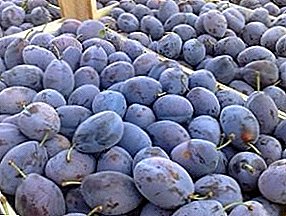 The ripening of the fruits of the plum "Stanley" falls on the end of August - the beginning of September. This variety is high-yielding. About 60 kg of fruit can be harvested from one tree. The crop ripens gradually. You can collect it for two or three times.
The ripening of the fruits of the plum "Stanley" falls on the end of August - the beginning of September. This variety is high-yielding. About 60 kg of fruit can be harvested from one tree. The crop ripens gradually. You can collect it for two or three times.
To harvest the plum you need to choose a dry day. Fruits are harvested as soon as they are fully ripe. If transportation is planned, the crop must be harvested five days earlier. Plums that are not collected in time, become soft, with an unpleasant taste and they crumble. To collect the fruit you need to prepare boxes or baskets.
Begin to collect plums from the ends of the lower branches, moving towards the center. Fruits need to be touched as little as possible, so as not to erase wax. The Stanley plum has fragile wood, therefore it is not recommended to shake the tree and tilt the branches. It is better to use the ladder if the fruits grow too high.
Did you know? Regular consumption of plum enhances immunity and contributes to the prolongation of youth. It also serves to prevent the onset of oncological diseases.
The fruits of plum varieties "Stanley" fresh stored for about six days in the refrigerator. For long storage, you can use the following methods:
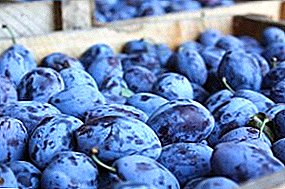
- Frost. Plums should be washed and decomposed into special bags for storing food in the freezer. You can keep the fruit for about seven months. At the end of this period, the plums do not deteriorate, but simply become sour.
- Canning. From a grade of "Stanley" excellent jam, jam, jams, compotes turn out. And also you can make tincture, liqueur, plum wine.
- Cooking prunes. Plums should be kept in a hot solution of food salt for no more than half a minute. Then rinse and place in a slightly open oven for three hours at 50 degrees. When plums cool down, they are dried for another five hours at a temperature of 70 degrees. And then another four hours at 90 degrees. Prunes are stored in a cool place in paper bags, wooden boxes or glass containers.
Plum "Stanley" - An excellent choice for summer residents. High yields, winter hardiness, good disease resistance - qualities that make its landing more than reasonable.


